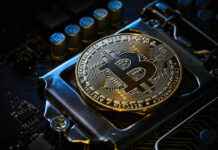MADRID, 27 Mar. (EUROPA PRESS) –
The price of the yen against the dollar fell momentarily this Wednesday to its lowest level in almost 34 years, despite the fact that the Bank of Japan carried out its first interest rate increase in 17 years a week ago, which has led the Japanese Government to express its concern about the devaluation of the currency, as well as its willingness to adopt “decisive” measures.
In statements to the press, the Japanese Minister of Finance, Shunichi Suzuki, admitted “a high degree of nervousness” regarding the situation in the foreign exchange market. “We want to take decisive measures against excessive movements without excluding all options,” said the minister.
Suzuki’s comments, which evoke Tokyo’s stance ahead of the fall 2022 intervention in the markets, came after the dollar’s exchange rate against the yen reached an intraday high of 151 in today’s session. .97 yen, the worst crossing of the Japanese currency against the ‘greenback’ since July 1990, although after the minister’s statements it recovered some ground and stabilized at 151.7 yen per dollar.
Likewise, in an intervention by the governor of the Bank of Japan, Kazuo Ueda, before the Committee on Finance and Financial Services of the House of Representatives, the central banker recalled that monetary policy “does not directly control exchange rates,” although he admitted that These are a factor with an important impact on the economy and prices.
“The Bank of Japan, in close cooperation with the Government, will continue to pay close attention to trends in the foreign exchange market and the impact on the economy and prices,” he added, according to the Japanese network NHK.
The weakening of the yen occurs despite the fact that the Bank of Japan decided a week ago to make a historic turn in its monetary policy by announcing the first increase in the price of money in 17 years, thus ending the era of negative rates in which the institution entered into in 2016, thus becoming the last central bank in the world to close this monetary chapter.
At its last meeting, the Bank of Japan’s Policy Council decided to raise the reference rate to a range of 0% to 0.1% in what is the first increase in the country’s interest rates since 2007, in addition to putting also end control over the yield curve of Japan’s ten-year sovereign bonds, another measure implemented since 2016 within the framework of its quantitative and qualitative easing (QQE) policy, which according to the entity “has fulfilled its function.”
Despite this historic rate hike, the Bank of Japan then stressed that, given the current outlook for economic activity and prices, it anticipates that accommodative financial conditions will remain for the time being, suggesting that it is in no rush to continue tightening its monetary policy.







